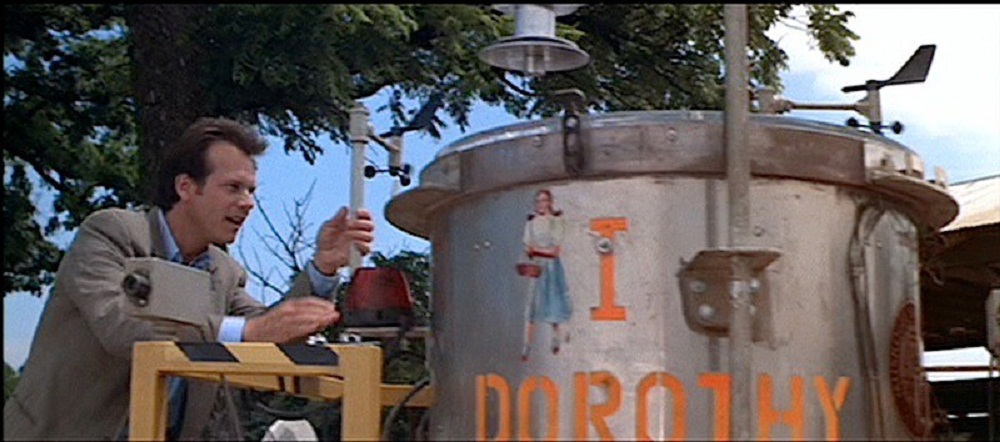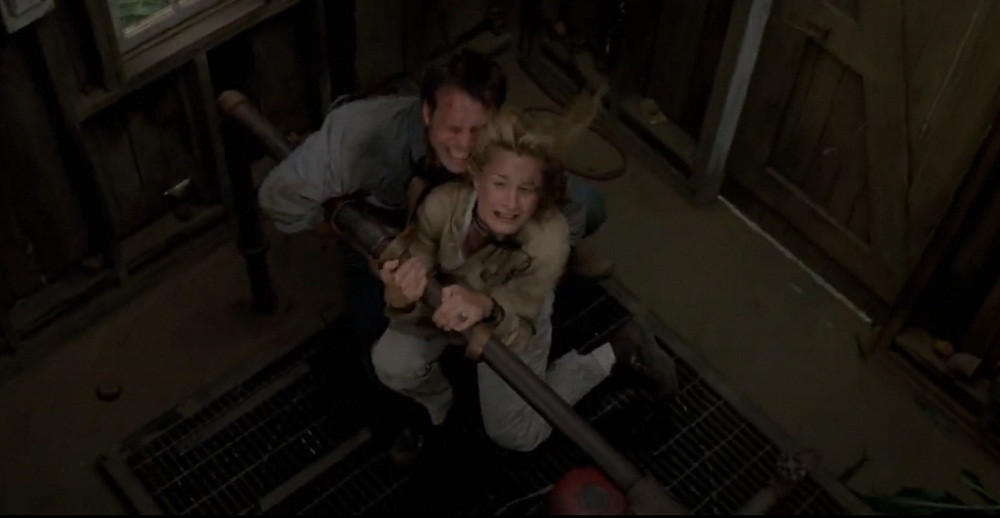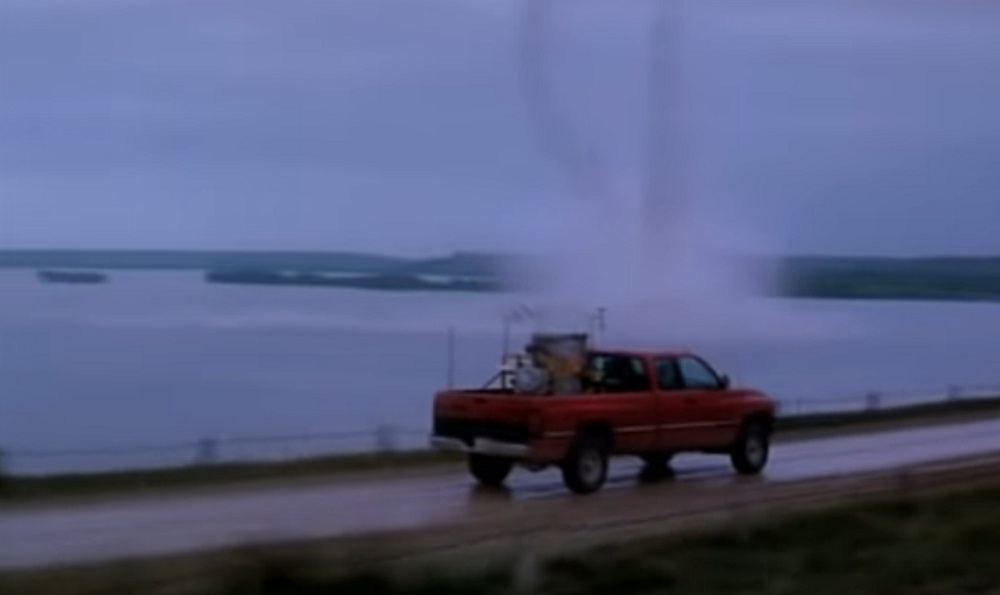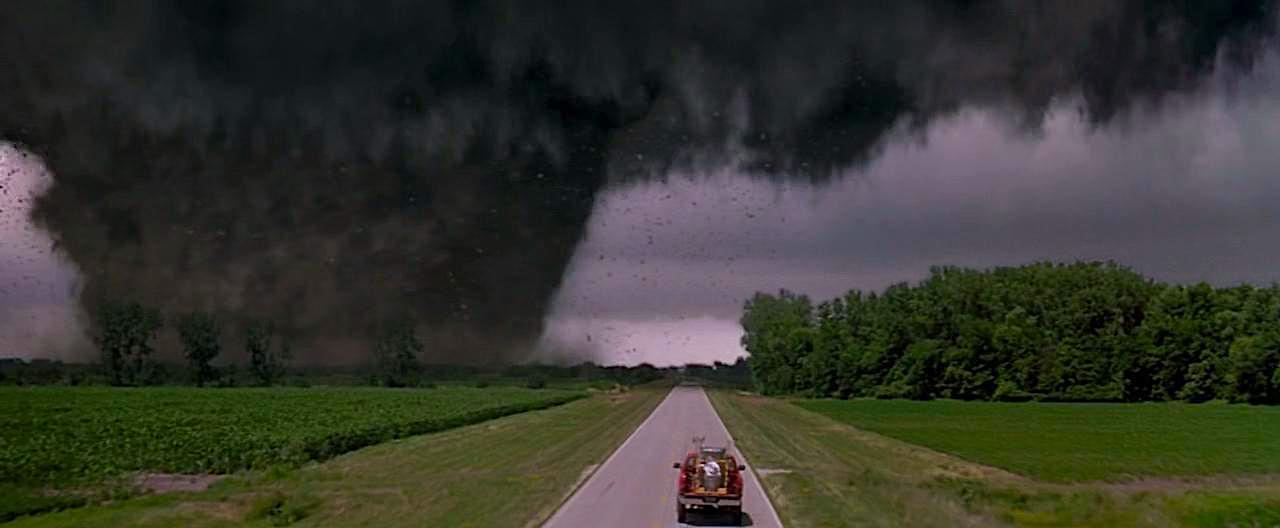Jan de Bont’s ‘Twister’ (1996) is set amid nature’s extreme fury where a group of researchers attempts to take some intricate observations of a slew of “twisters.” Although the film’s plot is a bit too generic, what makes it a genre-classic is the visceral thrills that it brings with its realistic visual effects. For obvious reasons, most experts would easily be able to draw a clear portrait of what’s real and not-so-real in the movie. But for regular moviegoers, we’ve explained how much of the film is grounded in reality.
Is Twister Based on a True Story?

Some might dismiss ‘Twister’ as a fictional tale of researchers who put themselves in harm’s way and eventually defy all odds to succeed. And as unrealistic as it may seem at times, ‘Twister’ is actually inspired by the real scientific work of scientists at the NOAA National Severe Storms Laboratory. Just like the fictional characters of the film create Dorothy, the researchers at NOAA had also created an instrument called TOtable Tornado Observatory (TOTO) to collect data from the funnels of tornadoes in the 70s and 80s. However, unlike the characters of the movie, they were never really able to successfully execute their research. Soon after this, even TOTO retired in 1987 but inspired Michael Crichton to create a movie inspired by the researchers who worked on it.
How Accurate is Twister?

The biggest blunder in the film’s accuracy lies in its initial moments itself. In the opening scene, the father of Jo (played by Helen Hunt) tells his family about an imminent storm and claims that the news channel predicts it to be an F-5. F-5 here refers to Fujita-5, which is the highest level on a scale (Fujita Scale) used for measuring the intensity of tornadoes. Although the film’s use of technical gobbledygook is appreciable, the issue with these Fujita scale references is that in real life, the Fujita limit of a tornado can only be determined after the storm destroys a given area. In contrast to this, the researchers in the movie label tornadoes with Fujita ratings based on their observations. Speculating the seriousness of disaster here is possible, but assessing its exact value on a scientific scale is quite unrealistic.
Chris Cappella, a meteorologist at USA Today, criticized the film’s accuracy in his review by claiming that in real-life, no storm chasers would ever take the risks that Jo and Bill take throughout the film’s runtime. “In reality, storm chasers consider dirt roads, let alone fields of dirt, to be death traps as heavy rain can instantly turn them into axle-deep mud bogs trapping chasers and their vehicles in harm’s way,” he said. This also makes it pretty obvious that even in the closing scene of the movie—where Jo and Bill brave a storm by tying themselves to pipelines—is very unrealistic. In real life, the flying debris inside a storm would easily kill them.

There are also some inaccuracies in the film’s depiction of basic physics in context with the objects that are affected by the storm. There’s one particular scene where Jo and Bill’s truck gets surrounded by tornadic waterspouts and they see flying cows. On the bright side, this scene is pretty accurate with its portrayal of how tornadoes can even lift heavy objects. However, the fact that Bill’s truck almost remains intact defies the most basic laws governing motion. In several scenes, the film also depicts its characters taking shelter inside vehicles and under bridges after being hit by tornadoes. But in real life, according to the guidelines provided by NOAA, vehicles, and spaces under brides are not safe at all.
Despite all of these discrepancies, or should I say oversights, one of the most accurate elements of the film’s storyline is the instrument “Dorothy” that the researchers use for studying tornadoes. Moreover, as mentioned at the official website of NOAA, Bill Paxton and other cast members of the film spent a lot of time at the National Severe Storms Laboratory to get a hang of how things truly work there. They were also taken out for a real tornado chase to help them deeply understand the roles they’ll be playing.
Is Dorothy a Real Instrument?

Dorothy is not a real instrument. But as mentioned earlier, its design is inspired by NOAA’s TOtable Tornado Observatory (TOTO). Apart from their working mechanisms, another major similarity between the two instruments is that Dorothy’s name has been derived from the main character of ‘The Wizard of Oz’ while Toto’s named came from Dorothy’s little dog from the same classic fable. In the above image, you can also spot “D.O.T. 3,” the instrument used by Bill’s storm chasing competitors, alongside TOTO and Dorothy at the NOAA National Severe Storms Laboratory.
Read More: Where Was Twister Filmed?


You must be logged in to post a comment.